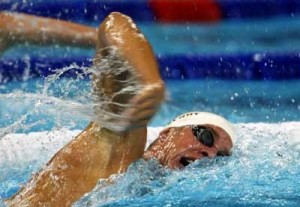Swimming Exercise and Pain Management of a Human Body
This is a guest post by Felicia Baratz-Savage from Eat Breath Blog.
At first, it may seem counter-productive to hit the gym or pool when you experience pain, but science and anecdotal research have shown that exercise may actually help to alleviate pain. While some people are more likely to reach for a painkiller to deal with back pain and others may even go so far as to opt for surgery. Low impact exercise such as swimming is a healthy and enjoyable way to reduce musculoskeletal pain.
The idea that exercise can help to eliminate pain isn’t entirely uncommon. Many people are accustomed to “walking it off” and exercise is one of the main recommendations for a woman who is experiencing pain due to menstrual cramps. It should come as no surprise, then, that exercise can also help to relieve back pain. Because it’s exercise, it can also help strengthen a weak back and, potentially, reduce future pain.
Why is swimming the ideal type of exercise when it comes to pain management? Unlike jogging, weight lifting or other high-impact sports, swimming does not require any twisting or direct stress on your back. There are no hard concrete sidewalks or difficult equipment that can actually increase pain. Swimming relies on fluid motions with less resistance than other sports. Swimming can also help to strengthen muscles to make them less impervious to pain in the future.
Finding a place to swim isn’t difficult either. You can swim in a lake or pond, go to the beach or find a local gym. Some people have above ground pools in their backyards that they can swim in.
Experts especially recommend the front stroke or breaststroke methods for patients who are using swimming as a method of exercise to eliminate back pain and other aches. The common front crawl also offers a pain-free way to strengthen back muscles that can commonly cause pain. However, you can actually do more harm than good by swimming for too long or by using improper form. Consider the following suggestions to maximize pain relief from swimming:
- Keep your head straight to minimize strain on the neck and twisting the back. Many swimmers over-rotate when taking breaths. The head should remain along the axis of the body.
- Using wider strokes when performing the breaststroke ensues that the water serves as a cushion while strengthening back muscles in a therapeutic form.
- The body should remain flat when doing the front crawl. The best form involves strong leg kicks so that the lower body does not drag in the water.
- Strokes should always remain fluid. Jerky movements can further increase pain and lead to damage to the back or other parts of the body.
- The sidestroke is ideal for alleviating back pain because it doesn’t require excess amounts of pressure on any part of the body. However, you should always alternate sides to prevent exhausting of and muscle strain. Switching it up also helps swimmers to maintain the sidestroke for longer periods of time.
- The backstroke can quickly exhaust neck muscles if you don’t consistently practice it. You should take it easy when picking it up once more, or for the first time.
Physical therapists and chiropractors agree that swimming is one way to reduce both current and future pain, and can complement any current pain management program.
